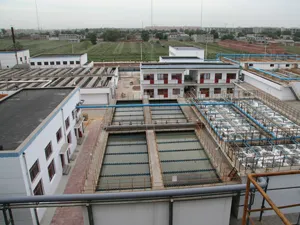The Role of Chemicals in Cooling Towers A Comprehensive Overview
Cooling towers are crucial components in industrial processes and HVAC systems, enabling the dissipative removal of heat from equipment and processes that generate substantial heat loads. To optimize their efficiency and ensure longevity, several chemical treatments are employed in cooling towers, aimed primarily at water quality management, scaling prevention, corrosion protection, and biological control.
Water Quality Management
At the heart of effective cooling tower operation is the management of circulating water quality. The primary challenge lies in the water that evaporates during the cooling process, concentrating the minerals and contaminants left behind in the system. To address this issue, chemical additives are utilized. These include
1. Corrosion Inhibitors These chemicals protect metal components of the cooling tower, such as pipes and heat exchangers, from oxidative damage. Common corrosion inhibitors include phosphates, molybdates, and nitrogen-containing compounds, which form a protective film on metal surfaces.
2. Scale Inhibitors Hard water that crosses the cooling towers can lead to scale formation, which adversely affects heat transfer efficiency. Scale inhibitors like polyacrylic acid and phosphonates help to prevent the crystallization of minerals such as calcium and magnesium, keeping the system clean and efficient.
Biological Control
Biological growth, including algae, bacteria, and biofilms, can lead to significant operational challenges in cooling towers. The presence of these organisms can clog systems, reduce heat transfer efficiency, and pose health risks. Therefore, biocides are essential in maintaining the hygienic operation of cooling towers.
chemical used in cooling tower

1. Oxidizing Biocides Chlorine and bromine are widely used oxidizing agents that effectively kill most microbial life forms. These biocides work by disrupting cellular processes in microorganisms, ensuring a cleaner and safer cooling environment.
2. Non-Oxidizing Biocides For areas where chlorine is less effective or where its residual presence is an issue, non-oxidizing biocides, such as isothiazolinones and quaternary ammonium compounds, are employed. These chemicals target specific metabolic pathways in bacteria and algae, controlling their growth without the risks associated with chlorine.
Environmental Considerations
While the effectiveness of these chemicals is critical for the operational success of cooling towers, it is equally important to consider their environmental impact. Regulatory frameworks increasingly emphasize the reduction of chemical usage and the adoption of eco-friendly solutions. Many companies are now exploring
- Natural alternatives Research into using plant extracts and other eco-friendly materials shows promise in replacing conventional biocides. - Water treatment technologies Advanced filtration and ultraviolet (UV) light systems help manage water quality without the need for harsh chemicals.
Conclusion
In summary, the use of chemicals in cooling towers plays a vital role in ensuring the efficient operation of these systems. From corrosion prevention to biological control, these substances contribute to the longevity and effectiveness of cooling processes across various industries. However, the environmental ramifications of chemical usage cannot be ignored. As technology advances, the cooling tower industry is likely to move towards more sustainable practices that retain operational efficiency while reducing environmental impacts. Balancing these needs will be key to achieving optimal performance in cooling systems while protecting our planet for future generations.

